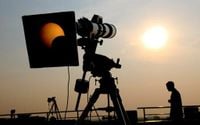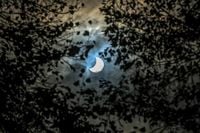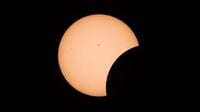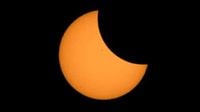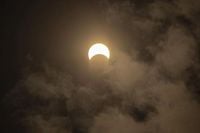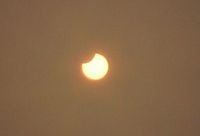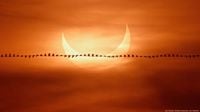On March 29, 2025, a partial solar eclipse will captivate skywatchers across Poland, offering a rare celestial spectacle. This event, which occurs when the Moon partially obscures the Sun, will be best observed in north-western regions of the country, where up to 26% of the Sun's disk will be covered. In Warsaw, the eclipse will last from 11:50 AM to 1:06 PM, with the maximum phase occurring at 12:28 PM, when 15.6% of the Sun's diameter will be obscured.
Solar eclipses have fascinated humanity for centuries, inspiring awe and wonder. The phenomenon arises when the Moon, despite being about 400 times smaller than the Sun, is approximately 400 times closer to Earth, creating an illusion of similar sizes in the sky. As the Earth, Moon, and Sun align, the Moon casts a shadow on Earth, plunging areas into darkness during the day. While total eclipses are rare and spectacular, partial eclipses, like the one on March 29, are more frequent and accessible to a wider audience.
The best viewing conditions for this eclipse in Poland will be in north-western areas such as Szczecin, where observers can expect to see a maximum coverage of 26%. Conversely, in southern regions like Krakow, visibility will be significantly lower, with only about 5% of the Sun obscured. According to forecasts from the American agency, the most substantial coverage will occur over the Labrador Peninsula in Canada, where the Moon may obscure up to 93.6% of the solar disk.
Weather conditions will play a crucial role in the visibility of the eclipse. Grażyna Dąbrowska, a meteorologist from the IMGW, noted that regions such as Suwałki, Mazury, and eastern Pomerania are expected to have clear skies, providing the best opportunities for observation. However, areas like Lower Silesia and parts of southern Poland may experience cloud cover, potentially hindering views of the eclipse.
Understanding solar eclipses involves recognizing the different types: partial, total, and annular. A partial eclipse occurs when the Moon covers only a portion of the Sun, while a total eclipse happens when the Moon completely obscures the Sun. In contrast, an annular eclipse occurs when the Moon is too far from Earth to cover the Sun entirely, resulting in a "ring of fire" effect. The upcoming eclipse in March is classified as partial.
Prof. Tomasz Bulik, the director of the Astronomical Observatory at the University of Warsaw, emphasized the uniqueness of solar eclipses visible from Earth. He explained that the Moon is gradually moving away from Earth at a rate of 3.78 cm per year due to tidal interactions. In about 600 million years, the Moon will be too distant to completely obscure the Sun, marking the end of total solar eclipses as we know them.
For those eager to witness this astronomical event, safety is paramount. Observers should never look directly at the Sun without proper eye protection. Prof. Bulik recommends using specialized eclipse glasses with Mylar filters, which significantly reduce sunlight exposure. Ordinary sunglasses or makeshift filters like CDs or photographic film are not safe and can cause serious eye damage.
The University of Warsaw's Astronomical Observatory will host a public viewing event, providing telescopes and safe viewing glasses for attendees. Experts will guide the event, ensuring a safe and educational experience for all. If weather conditions prove unfavorable, the event may be postponed.
As excitement builds for the partial solar eclipse on March 29, many will look skyward, hoping for clear skies and a chance to experience the wonder of this celestial event. The last solar eclipse visible in Poland occurred on October 25, 2022, and the next total solar eclipse will be on August 12, 2026, visible from parts of Iceland, Greenland, Portugal, and Spain.
This upcoming eclipse is not just an astronomical event; it is a reminder of the dynamic and interconnected nature of our solar system. As the Moon dances between the Earth and the Sun, it offers a moment to reflect on our place in the cosmos and the beauty of the universe that surrounds us.
